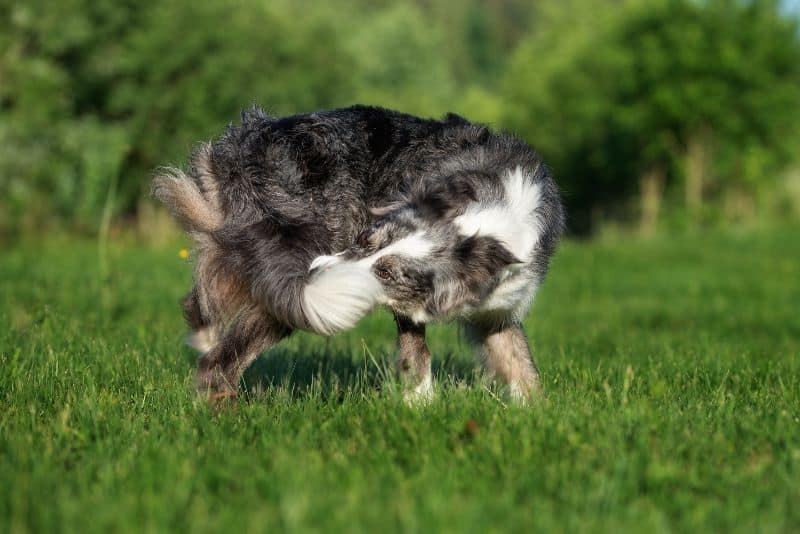Spotlight on Dog Behavior: Why Do Dogs Chase Their Own Tails?

In the human world, we “chase our tails” when we rush around ineffectually – be it physically or mentally. And, really, who can’t relate to that every once in a while? Dogs definitely can, but for many of our canine friends, the idea of chasing their tails is rooted in reality rather than metaphor. Why do they do this? Is there anything to be done about this mysterious (and yet universal) dog behavior?
Funny Or Not?
Of the many things that dogs do, few are as entertaining as when they chase their own tails. It looks kind of fun, but if running around in tight circles starts to look a bit suspicious, your intuition could be on point.
Tail Chasing Ia a Good Workout
One of the reasons behind this common dog behavior is that our four-legged friends need exercise. If they sit for long periods in silence, they can get a bit stir-crazy. Likewise, extended stints in the same environment, such as the backyard, can be very boring. The antidote could be a quick game of “catch that tail!”
You may decide to increase your dog’s outdoor exposure. Start with longer walks or increase the challenge with a hike or run. Add food puzzles or play fetch for longer periods of time.
If you don’t see any changes to their behavior, please let us know. Separation anxiety and even a form of obsessive compulsive disorder can lead to this situation, as well.
Fool Me Once
Dogs are clever animals and if they get a positive response from a beloved owner they will continue with whatever dog behavior that got them the reaction of choice. Chasing their tails can definitely ake owners laugh, but that can become problematic. Attention-seeking behavior is best handled with a calm, neutral reaction.
A Dog’s Life Stages
Puppies are commonly seen chewing, biting and chasing their tails. It’s part and parcel of their playful natures. Many dogs grow out of this behavior as they mature.
Similarly, aging dogs may be seen chasing or biting their own tails because of a decline in mental cognition. Often, after an exam and some diagnostic testing, behavior modification medications can be useful in correcting this in older dogs.
Discomforting Dog Behavior
External parasites, such as fleas, and internal parasites, such as tapeworms, can cause itching and irritation in and around the tail area. Anal glands that need expressing and other rear-end issues can explain an overabundance of chewing, biting, or chasing their own tails. As a natural component of pet wellness care, we can help your dog with these symptoms.
Identify the Triggers
The bottom line is that it’s usually completely normal to witness this dog behavior, but if you start to see various triggers that cause them to chase their own tail more often it’s time to investigate. At Beverly Hills Veterinary Associates, we can help you assess potential behavioral problems and help you correct them. Please contact us anytime!
